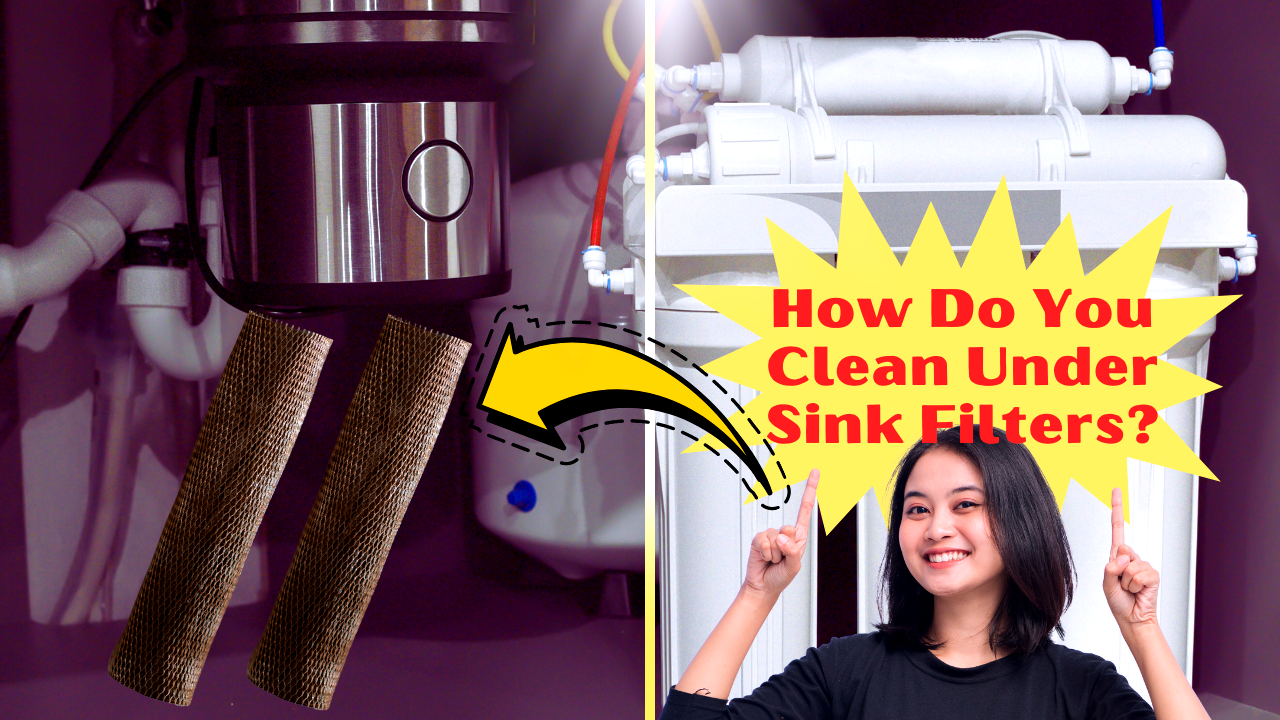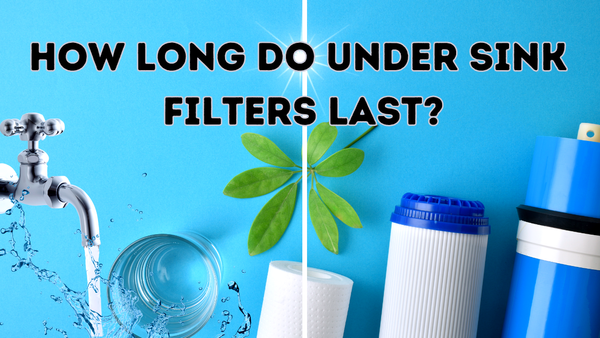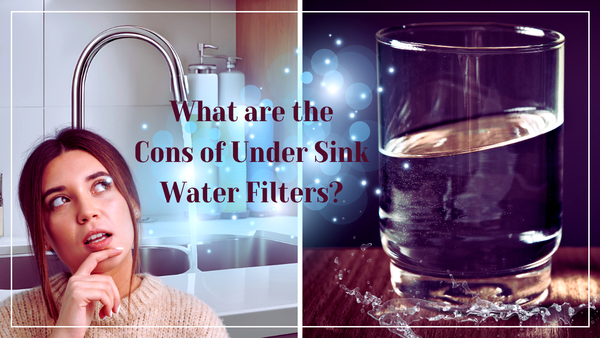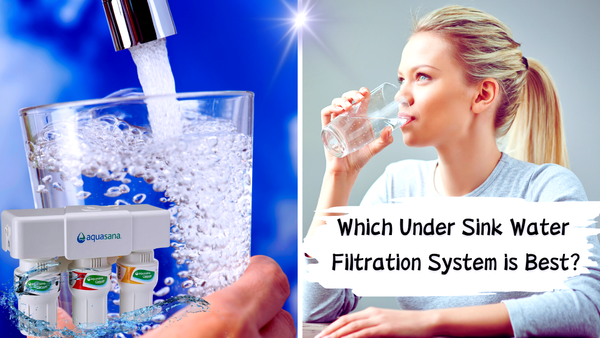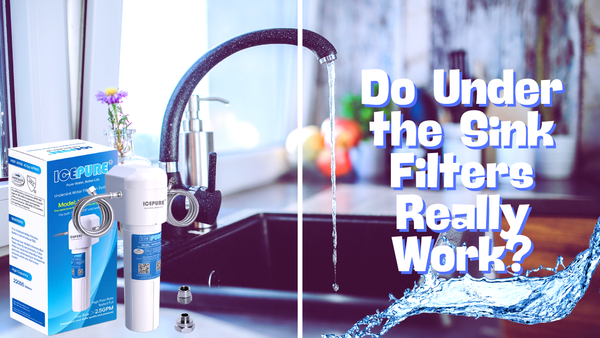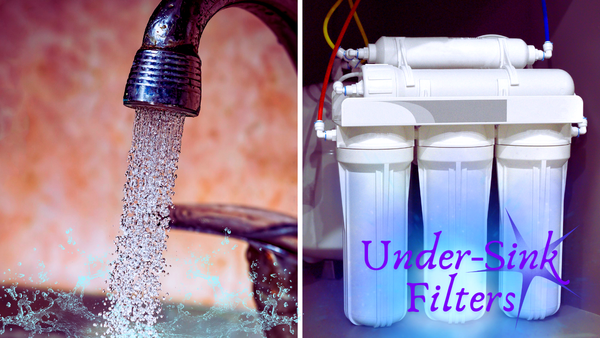Key Takeaways:
- Regular cleaning and maintenance of under-sink water filters ensure optimal performance and longevity.
- Different types of filters, such as carbon filters and reverse osmosis systems, require specific cleaning methods.
- Proper cleaning can significantly improve water quality, removing contaminants like chlorine, heavy metals, and bacteria.
Under-sink water filters are popular for many households, providing great-tasting water directly from the tap. Filter systems, including under-sink water filters, are essential for providing clean water. However, to maintain their efficiency, cleaning and replacing the filters regularly is crucial. This guide will walk you through cleaning under-sink filters, ensuring your drinking water remains pure and healthy.
Understanding Under-Sink Water Filters
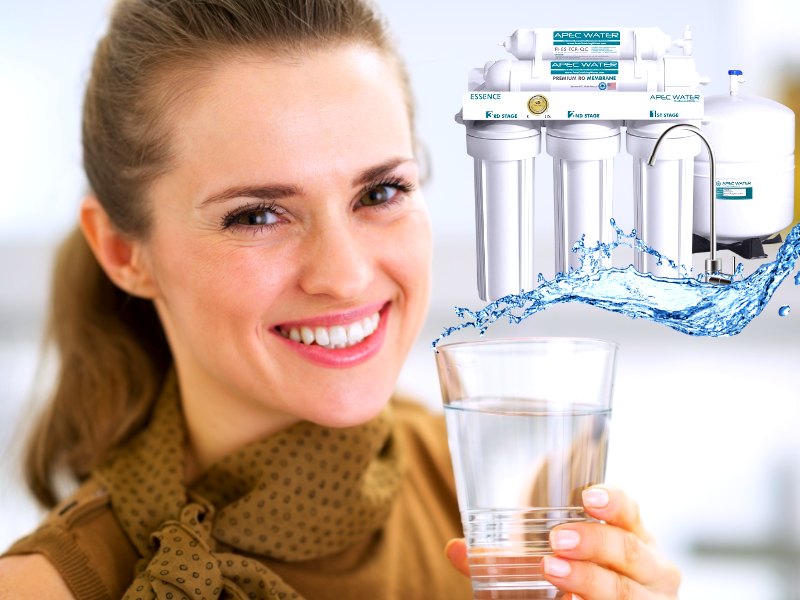
Under-sink water filters are installed beneath the kitchen sink and are connected to a dedicated faucet. These systems are designed to remove contaminants from tap water, providing filtered water for drinking and cooking. Common types include carbon filters, reverse osmosis systems, and sediment filters.
Carbon filters use activated carbon to remove chlorine, chemicals, and other impurities, improving the taste and odor of the water. They are particularly effective at removing organic compounds and chlorine, which can significantly enhance water quality. Regular maintenance, such as changing the carbon filter periodically, is crucial to ensure its effectiveness in purifying water.
Reverse osmosis systems, on the other hand, use a semi-permeable membrane to filter out a wide range of contaminants, including heavy metals and bacteria. These systems often require professional installation due to plumbing complexities, especially under-sink setups. Proper maintenance, including regular filter changes, is essential to maintain their high water purification capabilities, making them more effective than basic filtration options.
Tools and Materials Needed
Gather the necessary tools and materials before you start cleaning your under-sink water filter. You’ll need a filter wrench, replacement filter cartridges, a bucket, and a clean cloth. Having a user manual for your specific filter system is also helpful, as the cleaning process can vary depending on the model. The tools and materials may vary depending on the type of filter system you have.
A filter wrench is essential for loosening and tightening the filter housing. If your current filters are worn out or clogged, replacement filter cartridges are necessary. A bucket will catch any water that spills during the cleaning process, and a clean cloth will help you wipe down the filter housing and other components.
Step-by-Step Cleaning Process
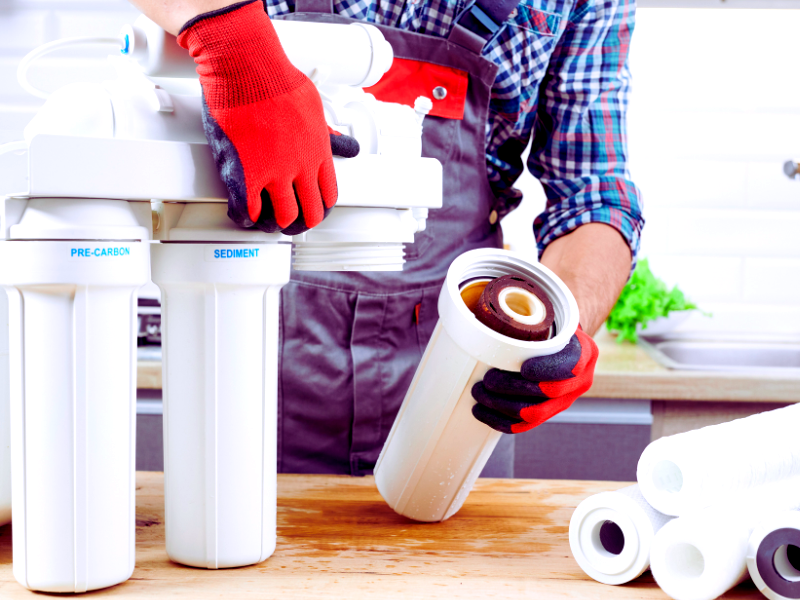
1. Turn Off the Water Supply
The first step in cleaning your under-sink water filter is to turn off the water supply. Locate the shut-off valve under the sink and turn it clockwise to stop the water flow. This will prevent water from spilling out when the filter housing is removed.
2. Relieve Water Pressure
Next, relieve the system's water pressure by opening the dedicated faucet. Let the water run until it stops, then close the faucet. This step is crucial to avoid sudden bursts of water when you remove the filter housing.
3. Remove the Filter Housing
Use the filter wrench to loosen the filter housing. Turn the wrench counterclockwise until the housing comes off. Be prepared for some water to spill, so have your bucket ready to catch it. Once the housing is removed, remove the old filter cartridge and set it aside.
4. Clean the Filter Housing
Thoroughly clean the inside of the filter housing with a clean cloth. Remove any debris, sediment, or buildup that may have accumulated. This step ensures that your new filter cartridge will function properly and that no contaminants are left behind.
5. Install the New Filter Cartridge
Insert the new filter cartridge into the housing, ensuring it is properly aligned. Some filter cartridges have an arrow indicating the direction of water flow, so follow the manufacturer’s instructions. Once the cartridge is in place, reattach the filter housing and tighten it with the filter wrench. The installation steps may vary depending on the type of filter system.
6. Turn On the Water Supply
Turn the water supply back on by turning the shut-off valve counterclockwise. Open the dedicated faucet and let the water run for a few minutes to flush out any air and ensure the new filter works correctly. Check for leaks around the filter housing and tighten it further if necessary.
Maintaining Your Under-Sink Water Filter
Regular maintenance is key to keeping your under-sink water filter in top condition. Depending on your filter system type, you may need to replace the filter cartridges every six months to a year. Some systems have a pre-filter that needs to be replaced more frequently, mainly if your tap water contains a lot of sediment. Maintenance requirements may vary depending on the type of filter system.
It’s also important to monitor the water pressure. If you notice a significant drop in water pressure, it could be a sign that the filter cartridges are clogged and need to be replaced. Regularly check the filter housing for any signs of wear or damage, and replace any worn-out parts as required.
Benefits of Clean Under-Sink Water Filters

Cleaning and maintaining your under-sink water filter has several benefits. First and foremost, it ensures that your drinking water is free from contaminants like chlorine, heavy metals, and bacteria. This not only improves the taste and odor of the water but also protects your health.
Clean filters also extend the lifespan of your filter system. When filters are clogged with debris and sediment, they have to work harder to filter the water, which can lead to wear and tear on the system. Regular cleaning and filter replacement keep the system running smoothly and efficiently.
Common Issues and Troubleshooting
1. Low Water Pressure
If you experience low water pressure after cleaning your under-sink water filter, it could be due to air trapped in the system. To resolve this, open the dedicated faucet and let the water run for a few minutes to flush out any air. If the problem persists, check the filter cartridges for clogs and replace them if necessary.
2. Leaks Around the Filter Housing
Leaks around the filter housing are usually caused by loose connections or worn-out O-rings. Make sure the filter housing is tightly secured and that the O-rings are in good condition. If the O-rings are damaged, replace them with new ones to prevent leaks.
3. Unpleasant Taste or Odor
If your filtered water has an unpleasant taste or odor, it could be a sign that the filter cartridges need to be replaced. Over time, filters can become saturated with contaminants and lose their effectiveness. Replacing the cartridges should resolve the issue and restore the quality of your drinking water.
Choosing the Right Filter System

When selecting an under-sink water filter system, consider the specific contaminants you want to remove from your tap water. Carbon filters are effective at removing chlorine and organic compounds and improving taste. They play a crucial role in purifying water by eliminating various contaminants. Regularly changing carbon filters is essential to maintain their effectiveness in filtration.
Reverse osmosis systems provide comprehensive filtration, removing a wide range of contaminants, including heavy metals, bacteria, and other impurities. Due to the complexity of the plumbing involved, it is advisable to hire professional help to install a reverse osmosis system to ensure it functions correctly and efficiently.
It’s also important to consider the installation process and maintenance requirements. Some systems are easier to install and maintain than others, so choose one that fits your needs and lifestyle. Look for systems that have been tested and certified by reputable organizations to ensure they meet quality standards.
Environmental Impact of Water Filters
Using an under-sink water filter can have a positive impact on the environment. By filtering tap water at home, you reduce the need for bottled water, which in turn reduces plastic waste. Additionally, many filter cartridges are recyclable, so be sure to check with the manufacturer for recycling options.
However, it's important to dispose of used filter cartridges properly. Some filters contain activated carbon and other materials that should not be thrown in the regular trash. Follow the manufacturer's guidelines for disposal to minimize environmental impact.
Cost Considerations
The cost of under-sink water filters can vary widely depending on the type and brand. While reverse osmosis systems tend to be more expensive upfront, they offer comprehensive filtration and long-term savings by reducing the need for bottled water. Carbon filters and sediment filters are generally more affordable and still provide effective filtration for many households.
When budgeting for an under-sink water filter, consider the cost of replacement filter cartridges and any additional maintenance supplies. Regular filter replacement is essential for maintaining water quality, so factor this into your overall cost.
Health Benefits of Filtered Water

Filtered water offers numerous health benefits. By removing contaminants like chlorine, heavy metals, and bacteria, under-sink water filters provide clean, safe drinking water. This is especially important for households with young children, elderly members, or individuals with compromised immune systems.
In addition to removing harmful contaminants, some filters also retain healthy minerals like calcium and magnesium, which are beneficial for overall health. Drinking filtered water can improve hydration, support digestion, and promote healthy skin.
Summary
Cleaning under-sink water filters is a straightforward process that ensures your drinking water remains pure and healthy. By following the steps outlined in this guide, you can maintain your filter system's efficiency and extend its lifespan. Regular maintenance not only improves water quality but also provides numerous health benefits for you and your family. Stay connected with us by subscribing to our newsletter today!
FAQ
How often should I clean my under-sink water filter?
Every 6 months to a year depending on the type of filter system and your tap water quality. Regular maintenance is best.
Can I clean and reuse filter cartridges?
Most filter cartridges are single-use only and should be replaced when they get clogged or worn out. Reusing filter cartridges can compromise water quality and reduce the effectiveness of the filtration system.
What if my filtered water tastes or smells bad?
If your filtered water tastes or smells bad it’s time to replace the filter cartridges. Over time filters can get saturated with contaminants and lose their effectiveness. Replacing the cartridges should fix the issue and get water quality back to normal.
